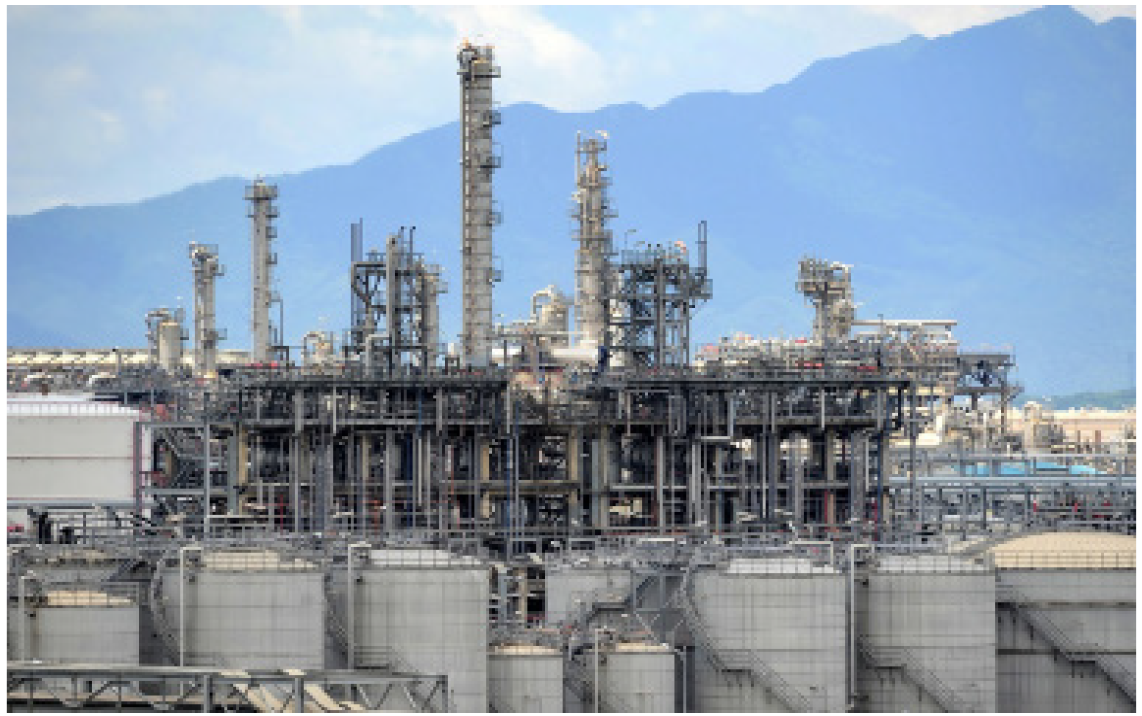Why Maintenance Matters
In the construction world you only build a project once but, it must be maintained for a lifetime.
In 1952, 13 International Unions formed a strategic alliance designed to capture maintenance work at existing industrial facilities across Canada. For too many years the building trades union members had been involved in the construction phase of many of the major industrial plants within our country and as soon as these projects were complete workers moved on to the next project. The strategic alliance which began the initiative to capture maintenance work is better known today as the General Presidents’ Maintenance Committee for Canada/National Maintenance Council for Canada (GPMC/ NMC). The Committee executed its first collective agreement covering maintenance in 1952 at the Shell Refinery in Sarnia Ontario and has played an important role in the livelihood for thousands of craft personnel. The forefathers of the Committee realized that in the construction world you only build a project once but it must be maintained for a lifetime. Maintenance truly is the gift that keeps on giving and it provides stability for many local unions. Today, sixty-two years later, the GPC/NMC negotiates and administers collective agreements in eight of the ten provinces and covers the following industrial sectors: Oil sands extraction, oil refining, petrochemicals, mining, electricity generation, pulp and paper, natural gas processing, offshore oil and gas processing, steel production, automotive and camp maintenance. From its humble beginnings, GPMC/NMC collective agreements have matured and now provide full time employment for approximately 16,000+ professional craft personnel on an annual basis. In 2013, over 32.5 million craft hours were executed by members represented by the building trades unions in the contract maintenance world. Work completed under these agreements are a significant contributor to Canada’s economy and the hours executed in any given year easily match those devoted to the large scale construction projects which are heralded as major economic drivers. Maintenance work is the equivalent to the erection of a multi-billion dollar mega project each and every year for the members of the building trades’ union members. Maintenance work plays an important role for the membership of most local unions across our nation and should not be taken for granted. The Committee members, both past and present, have worked hard over the years with the local union representatives and the signatory employers to put ourselves in a position whereby we are able to expand our circle of influence and capture new opportunities for maintenance work as they present themselves. The executed maintenance agreements are designed to provide a single set of terms and conditions for all trades working at the identified industrial facility and they provide sound, stable and predictable employment opportunities for the rank and file members. These are well refined collective agreements which pay union wages, union benefits, and union pensions. Many families have been raised successfully from the monetary compensation and benefits earned while working in the contract maintenance industry. The system and collective agreements established by the GPMC/NMC covering the contract maintenance industry is only successful if all parties are working together and each one is pulling their weight. Open honest and frank communication between the parties is essential in order for us to continue to grow and secure ongoing maintenance work. Working together is the only way to ensure that we are all winners at the end of the day
Growth
I n the last 14 years the craft hours executed under the GPMC/NMC agreements have increased from 10 million reported craft hours in 2000 to over 32.5 million in 2013, a 225% increase. A substantial amount of growth within a short time frame. Much of this growth can be attributed to the fact that craft professionals dispatched by the various local union halls have worked hand in hand with our contracting partners to complete the Clients work safely and on time and on budget. There are not too many industries out there that mirror our growth. As industrial construction activity has grown around us our signatory employers have been able to secure our fair share of the maintenance work as these new projects have completed their construction phase and enter their maintenance cycle. The unionized contract maintenance industry and the GPMC/NMC has an unheralded history and has received very little fanfare and exposure despite its success. We have a great success story which needs to be highlighted both inside and outside of our ranks. Within the next short while our local unions will enter a complete generational change and much of the long standing history and understanding of the maintenance industry will disappear with those retirements.
The expansion of contract maintenance work in Alberta has been a significant contributing factor to the increase in craft hours experienced under the GPMC/NMC collective agreements. The table below illustrates the growth in Alberta and of significant interest is the fact that over the last five years the work executed has grown by 71.84%. This represents an average annual growth of 11.44% per year. This type of growth has not been matched by any other industry. Much of this growth can be attributed directly to the activity in the Oil Sands of Alberta. Increased opportunities combined with the sheer size and duration of the turnarounds have increased to a magnitude that industry experts never imagined. Today’s Turnarounds are now executed on a massive scale and many surpass one million craft hours from the pre turnaround activities until the completion. The depth, breadth and magnitude of the turnarounds are ever increasing and the turnaround season is no longer limited to spring and fall activities. In order to meet manpower requirements our local unions have seen their systems being taxed with the massive influx of craft personnel, yet to date the local union representatives have done an incredible job meeting the demands which have been placed on them. As well, the rank and file members of every respective organization has stood up and delivered to meet the needs of our Clients. All estimates indicate that within the next decade the number of craft professionals required for maintenance activities will overtake those required within the construction industry. Our estimates indicate that if the GPMC/NMC the local unions and our signatory employers continue with their combined efforts, we should execute over 58 million craft hours by the year 2035. Not too many of those currently working in the maintenance industry remember the days when the Oil Sands facilities in Ft. McMurray were maintained on a 5 x 8 work schedule. Not too many will remember the day and age when the agreements had both long term and short term maintenance wage rates. Anyone, who was involved in the Alberta building trades unions in the 1980’s will remember the above. Since the late 1980’s the changes within the industry have been rampant. Today we have a proliferation of shifts, 5 x 8 Monday to Friday, 4 x 10 Monday to Thursday, 4 x 10 Tuesday to Friday and over twenty Compressed Work Week Schedules to accommodate the needs of our industry. Turnaround activities are now generally completed with the utilization of the approved alternative work week shift alteration which has dominated the industry since 2012 (10 hour day with 2 ½ hour paid breaks and the 12 hour day with 3 ½ hour paid breaks). Each and every shift has been implemented. As the foot print of the Oil Sands facilities increase it becomes more and more difficult to locate lunchrooms and other required facilities close to the workforce. More time and energy is being expounded by the craft personnel just getting to the break room. Collectively, the Clients, the Contractors and the Unions have working together to address these issues and create a system which is both fair and equitable to all parties. The current system seems to work well, but there is always room for improvement. It is often difficult to find that fine line to keep all Parties happy, but it appears as though we have been able to meet everyone’s needs. As the maintenance industry continues to expand there will be undoubtedly new shift and break schedules requested by both Clients and contractors and the Committee will follow its process and have consultation with the labour providers to determine if the parameters of the requests are acceptable and beneficial for labour. The Committee participants are all skilled professional craft personnel who have worked on the tools and understand what it is like to be in the field and understand the impact of its decisions on the men and women in the field. Decisions and changes are not taken lightly.
Compressed Work Week
The ongoing concerns with the Compressed Work Week Model
The contract maintenance industry in Alberta was somewhat altered with the addition of the Compressed Work Week Schedules (CWW) in the early 1980’s. The 1980’s was marked with increased competition from the alternative workforce and increased demands were placed on our signatory employers to deliver and meet the needs of our existing Clients. Clients were looking for 24/7 maintenance coverage, whereby the contractors maintenance personnel were entrenched and worked side by side with in plant forces. In order to keep ourselves in position as the Clients first choice for contract maintenance, the Committee bargained with the involved signatory employers to negotiate the terms and conditions for these unique shifts. These schedules have been designed to be utilized for long term maintenance and are not utilized during turnaround activities. In the beginning the parameters of the CWW created a great deal of confusion and questions from both union leadership and rank and file members, however, over the last thirty years, most of the issues faced and questioned have been addressed. CWW’s are specifically governed by the Articles contained in Article 17.000 of the GPMA collective agreements in Alberta and all of these Articles have been refined during subsequent rounds of bargaining. Today there are twenty plus CWW schedules which signatory employers may utilize on any particular GPMA site. The Committee understands that these schedules are contentious and unpopular for some union members yet others have accepted the CWW’s as a way of life. These work schedules are not for everyone, and often it boils down to a personal choice as to whether or not an individual is prepared to work maintenance which is covered by a CWW schedule. Like any other work schedule this one too has both positives and negatives.



